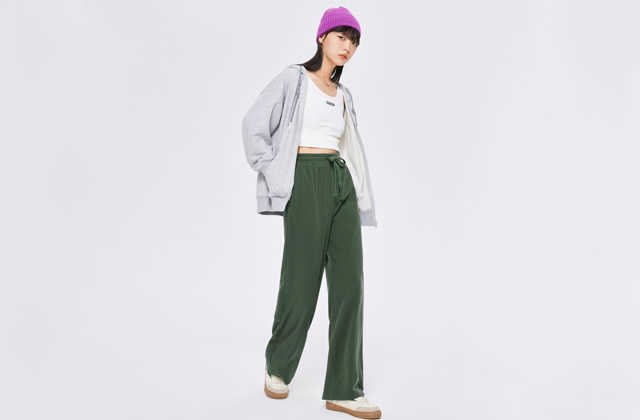What types of tennis shoes are available on how to buy tennis shoes
1. What types of tennis shoes
There are three types of tennis shoes today: hard ground shoes, clay shoes and grass shoes. Let me introduce it to you:
1. Grass shoes are full of protruding small dots
The strange venue of grassland as tennis enthusiasts has always been viewed, so sneakers on the grass field are also rare.In fact, the grass is the wet and slippery venue (none of them).When the players are Running on the grass on the grass, the grass will be broken quickly.The juice of the grass is mixed with fiber and soil to fill the soles quickly without falling off.Over time, players will become skaters on the grass.After studying for a long time, the designer found that this densely protruding small dot can avoid grass and mud attached to the soles of the shoe.At the same time, the dense origin can also be relatively improved and preventing the slide, which is a bit similar to the protruding cylindrical nail shoes on the football field.
2. ceramics shoes have a deeper and wider texture groove and protruding polygon small block
As a relatively slippery pottery venue (sand land, red earth field), the shallow soles of the hard floor shoes will be quickly filled by sand soil to lose grip.Therefore, clay shoes deepen and widen the texture of the soles, which makes the soles difficult to be filled by pottery.At the same time, with the Running lines, the pottery will be slowly opened.Those protruding blocks or polygonal pieces also play a role in small scrapers.While increasing friction, it is easier to fall.
3. Hard shoes have tight human characters or inverted gradient patterns
The hard ground court is the most common type of venue, and it also makes hard floor shoes the most common type of tennis shoes.Its pattern design is mainly tightly tightly human characters or inverted trapezoidal grooves.This is similar to the soles of the shoe of daily sneakers. The main role is to enhance the grip effect on the venue and make every step of you solid.
In addition, the soles of red soil and hard shoes are very similar. Here I teach you two skills to distinguish:
1. Hard shoe shoe hill -shaped or V -shaped lines are not the whole side. The red soil soles are the entire V -pattern road on the whole side (the red soil soles look neat, and the hard ground soles look messy).
2. The soil of the red soil shoe is raised and soft, and the hard sole is harder.Because the soles of red soil shoes are soft, they are not wear -resistant.

2. How to buy tennis shoes
When choosing tennis shoes, you can consider from the following aspects:
1. The style of playing
(1) Bottom player
The bottom line players mainly hit the backcourt of the stadium. The types of sneakers they need are more horizontal support.Because the soles are constantly moving, the soles are highly durable.
(2) Serving and Internet players
In front of this type of player more control network, it usually moves the feet behind more frequently when serving, so with durable toes and inner shoes are the most basic.
2. stadium type
Using different types of stadiums will have a different impact on the type of tennis shoes.The hard ground court requires that the shoes have higher durability, and the soft stadium, such as red soil, requires greater traction.
(1) Hard stadium
The design of hard tennis shoes takes into account more durability, providing a more flexible outsole and upper, and also has better support performance; on the hard ground, the soles may wear faster, and be sure to check it. Be sure to check it.tennis shoes are changed in time.The upper and outsole materials are cortical or ethylene -based material, which is more tough.
(2) soft ground court/red soil stadium
tennis shoes will consider the traction of the sole without damage when designing.
(3) A variety of venues
The design of this tennis shoes is suitable for various venues, which is convenient for players to play sneakers during various venues.
3. The right degree of foot type and shoes
Determine your feet before choosing tennis shoes.The feet are generally divided into three basic types: inside, normal feet, and outward (internal rotation).
Each pair of shoes is suitable for different people, each foot type and height, and arch.If you are not sure of the type of your feet, the simplest "wet test" can be determined.Simply put, wet your feet and step on a piece of black building paper.The characteristics of the footprint determine the type of the foot.
(1) Inside (internal rotation) overpowers
If you see a complete mark, and full and clear, it means that your feet are over -over.In the over -overrunrs, almost every step is to turn their feet inward, which requires a pair of stable tennis shoes to achieve better support effects.
(2) Normal foot neutral
If you see moderate space and visible arch areas, it means that your feet are normal, and you can try any kind of tennis shoes.
(3) Insufficient pride (inner rotation)
If the outside of the footprint is narrow and it is almost interrupted, your feet belong to the outward type.The fuggers are lacking inward inward during the movement. Choosing more flexible shoes can relieve and reduce the vibration while moving quickly and horizontally.


